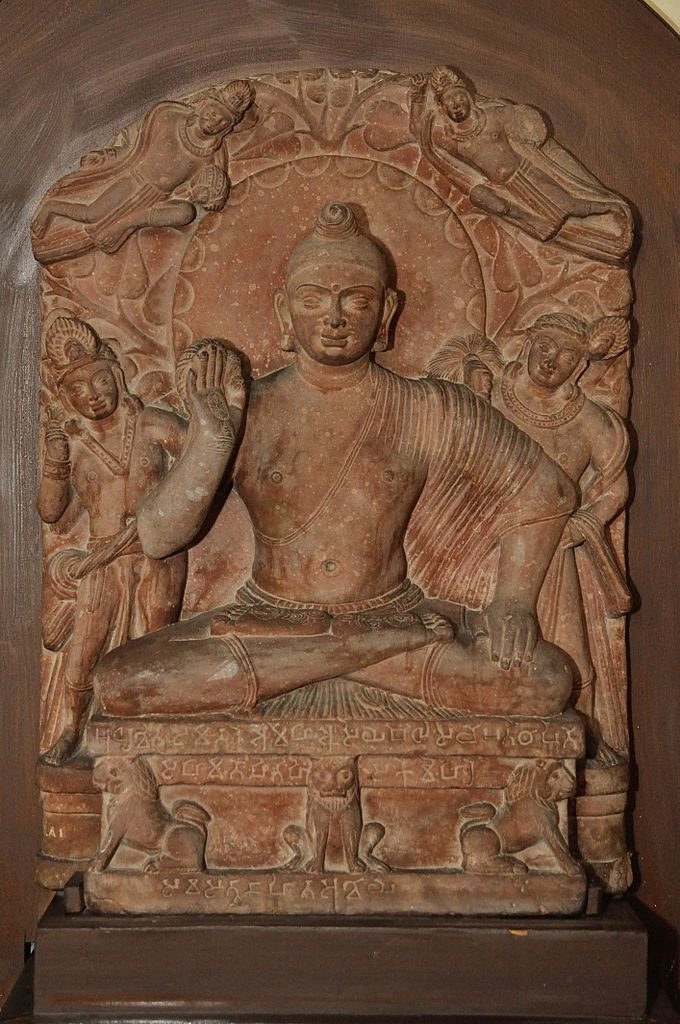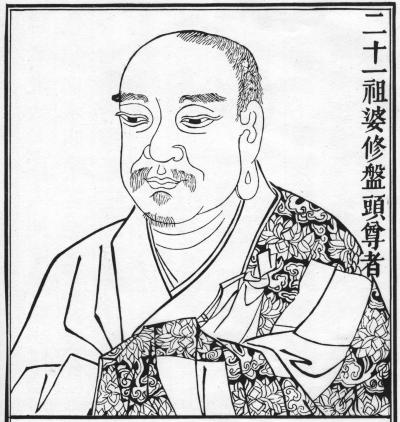A dynamic apprehension of reality
From impersonal reincarnation to the tripartite doctrine
The belief in the existence of a soul (or souls) animating the body goes back to the shamanic practices found in a wide range of traditional cultures. In the context where time is conceived as a cyclical round of ever-returning events, the reincarnation of souls made sense as an explanation of the renewal of life in its many forms. Following the death of a person, the soul, or souls, were thought to enter the bodies of other life-forms. In traditional pre-literate societies, the process of reincarnation was impersonal, and for the most part regarded as a fact of life.
This traditional view of reincarnation was, however, superseded by what Thomas McEvilley calls the “tripartite” doctrine of reincarnation, where the person’s ethical conduct, and the karmic residues it generates, shape one’s next incarnation, though at the same time, incarnated life as such was seen as painful, and the goal was to be released from reincarnation altogether (see Reincarnation – Early views). According to McEvilley, this tripartite doctrine was worked out in India, from ideas imported from Egypt and Mesopotamia, and then transmitted to Greece.
Shortly before the time of the Buddha, Yajnavalka had raised the “soul” to the level of an unchanging essence when he described the true nature of the individual self (atman) as being the same as that of the Cosmic Self: “the essence of the individual living being was claimed to be literally the same as the essence of the universe” (Gombrich). And both the Ajivikas and the Jains the future Buddha had met during his quest, has accepted the notion of a substantial life-monad going through a round of reincarnations.
The Buddha’s experience of no-self

Direct experience itself, in the form of jhana – deep concentration – had led the Buddha to state, as one of the core insights gained at the time of enlightenment, that there was no such thing as a substantial “soul” or self (atman) in either the essential sense given to it by Yajnavalka, or in the quasi-material sense found among the Jains. What we called our “self” is really a function, which we could call “subjectivity,” performed by a set of five skandhas, which were themselves the product of conditions. Given the close association between the concept of soul and that of reincarnation, we could have expected that the rejection of the one would would result in the rejection of the other. How could the karmic residues be passed on to the next incarnation in the absence of a substantial soul?
The texts clearly assert, however, that the Buddha did accept the doctrine of reincarnation, as well as that of karmic transmission. Peter Harvey writes that “on the night of his awakening, the Buddha is said to have remembered more than a hundred thousand” past lives! The only hint of a doubt has been found in two early texts where “the Buddha says that to believe in karma and rebirth, and accordingly live a moral life, will lead to a good rebirth if rebirths exist.” If not, “the person will in any case have been praised for their conduct by wise people. The “best bet” is thus to believe.” Could it be that the Buddha was an early Blaise Pascal?
Philosophical speculations in the centuries following the Buddha
Loyal to the Buddha’s assertion that the Dharma was a path of practice leading to the realisation of no-self, and its embodiment in our daily lives, the Councils which followed the time of the Buddha focused on the rules of conduct (vinaya), and avoided theoretical matters, on “orthopraxy rather than orthodoxy.” (Richard King). The nagging problem of the transmission of karma in the absence of a substantial vehicle did, however, fuel the speculations of Buddhist thinkers in the eighteen Buddhist schools which developed in the centuries following the Buddha. In a world dominated by the Brahmanical mindset, these thinkers were under pressure to produce an explanation which could stand up to the essentialist teachings of mainstream schools.
The two most significant Buddhist philosophical schools are the Sarvastivadas (also referred to as the Vaibashikas ) and the Sautrantikas.
The Sarvastivada School (founded in Gandhara & Kashmir around the time of Ashoka, i.e., 3rd century BCE) claimed that, though the “things” we see are “empty of svabhava (own being),” the “dharmas“ they are, as it were, made of, do really exist. The word dharma here means “the momentary mental and physical “event” that collectively constitute our experience of the world.” King adds that “although dharmas are momentary in the present, they have a real, durable essence (svabhava) that persists through the three realms of time.” Reality is experienced as the unfolding in the here and now as a quick succession of events – a bit like frames in a film. Each frame really exists, even if the story narrated in the film is our interpretation. This view is not far from the atomist view which posits atoms as real while the things made of atoms are mere conceptual constructs. Needless to say, such a description reintroduced the concept of svabhava, the unchanging essence the Buddha had so clearly rejected in the concept of anatman.
Vasubandhu (4-5th century CE), the Gandharan monk who is credited with the best treatise on the Sarvastivada doctrine, also wrote a commentary refuting it from the standpoint of the Sautrantika School.

The Sautrantika School had developed among the Sarvastivada communities settled in Gandhara, defining itself as the school of those “who adhere to the sutras,” signalling an eagerness to go back to the early teachings of the Buddha, rather than try to respond to the Brahmanical schools on their own “essentialist” ground. “The Sautrantika attempted to avoid what it saw as the unnecessary reification of categories. Dharmas only ‘exist’ for as long as they manifest themselves … The Sautrantika doctrine of momentariness (ksana-vada), therefore, involved the rejection of duration as a feature of dharmas … In many respects the Sautrantika position seems to have been an attempt to return the Abhidharma to the status of a ‘pure phenomenology’, that is, an account of what actually appears to consciousness rather than a theory about what exists (ontology).” King adds: “Crucial to the Sautrantika account was the notion of karmic seeds (bija). Actions produce karmic seeds within specific streams of consciousness that bear fruit (phala) at a later time … Sentient experience on this view is a continuity of transformations of consciousness caused by the fruition of the seeds of previous actions.”
This cannot be confirmed as having been the view of the Buddha since it was articulated over a millennium after his time, on the authority of texts purported to be the words of the Buddha, but only recently put down in writing. Peter Harvey, however, believes that this is what the Buddha could have said, as it overcomes the dualistic view of “substantial self” versus “no substantial self,” using both the doctrine of co-dependent origination (here referred to as “conditioned arising”) and that of the middle way. On the basis of what is described as “evolving” or “conducive” consciousness in the Majjhima Nikaya (composed between 3rd century BCE – 2nd century CE) and other texts, including Milinda’s Questions, Harvey describes the transmission process as follows:
At death, the momentum set up by constructing activities (and craving) is not cut off, but impels the evolving flux of consciousness to spill over beyond one life and help spark off another. Conditioned Arising here provides a “middle way” of understanding which avoids the extremes of “eternalism” and “annihilationism”: the survival of an eternal Self, or the total annihilation of a person at death … No unchanging “being” passes over from one life to another, but the death of a being leads to the continuation of the life process in another context, like the lighting of one lamp from another.The “latter” being is a continuation, or evolute of the “earlier” one on which he is causally dependent. They are linked by the flux of consciousness and the accompanying seed of karmic results, so that the character of one is a development of the character of the “other.” After death, a changing personality flux flows on. Given long enough, this may become very different from how one is now; and yet what will be then will have developed out of how one is, and acts, now.
This description of the link between consecutive lives could be regarded as a textbook example of co-dependent origination in the sense of serial chain of causation. “This is, because that is. This is not, because that is not.” And it undoubtedly overcomes the dualistic notion of eternalism and annihilationism: no unchanging being is transmitted, yet the person is not completely annihilated.
In a dynamic apprehension of reality, a substantial agent is not required
It could be argued, however, that a “seed” is as much a substance as an atom?” In Vedanta, where ultimate reality is seen as a the One unchanging brahman, thinkers have been agonizing over explaining how what is unchanging can give rise to the diversity of the phenomenal world we see. In East Asia, reality is seen as inherently a process of change, so change as such does not need to be explained. Change is the nature of reality which is what we also call life. The Buddha, of course, did not live in East Asia, but the traditional pre-Vedic apprehension of reality which inspired the quests of his sramana teachers was the same as that which we could still see in East Asia before its recent westernisation. There is no ultimate reality that is seen as really real because it is permanent, contrasted with the flow of phenomena unfolding before our eyes. Reality simply is phenomenal. Or rather, reality is dynamism, the energy which drives the energy of life throughout the world, generating the Ten Thousand Things. This energy of life is also within us, and this is this energy that yoga is said to move along channels, up the spine, etc. Kundalini yoga and Daoist alchemic practices are expressions of the same ancient understanding of reality as a dynamic process.
In such a context, then, the Buddha did not see the cycle of rebirths as requiring a substantial vehicle. It was the natural expression of life’s inherent dynamism shaping all “things” as it flows and emerges as the phenomenal forms that we see. What the Buddha calls co-dependent origination is a description of that flowing process. Harvey writes that “the experienced world is a constantly arising and passing away flow of processes.” Wherever there is a dynamic view of reality, there is no such thing as a supra-sensory world that is more real than the world we see. Reality as such is what we tend to call our experience (of it). The Buddha’s Dharma could not have been a theory about a meta-physical unchanging real world. It could only be a path of practice allowing us to experience the world as it flows, from the standpoint of a self that is not distorted by ego-centred biases, i.e., no-self.
Sources
Thomas McEvilley – The Shape of Ancient Thought (2002)
Richard F. Gombrich – How Buddhism Began (1996)
Richard King – Indian Philosophy: An Introduction to Hindu and Buddhist Thought (1999)
Peter Harvey – An Introduction to Buddhism (2013)

